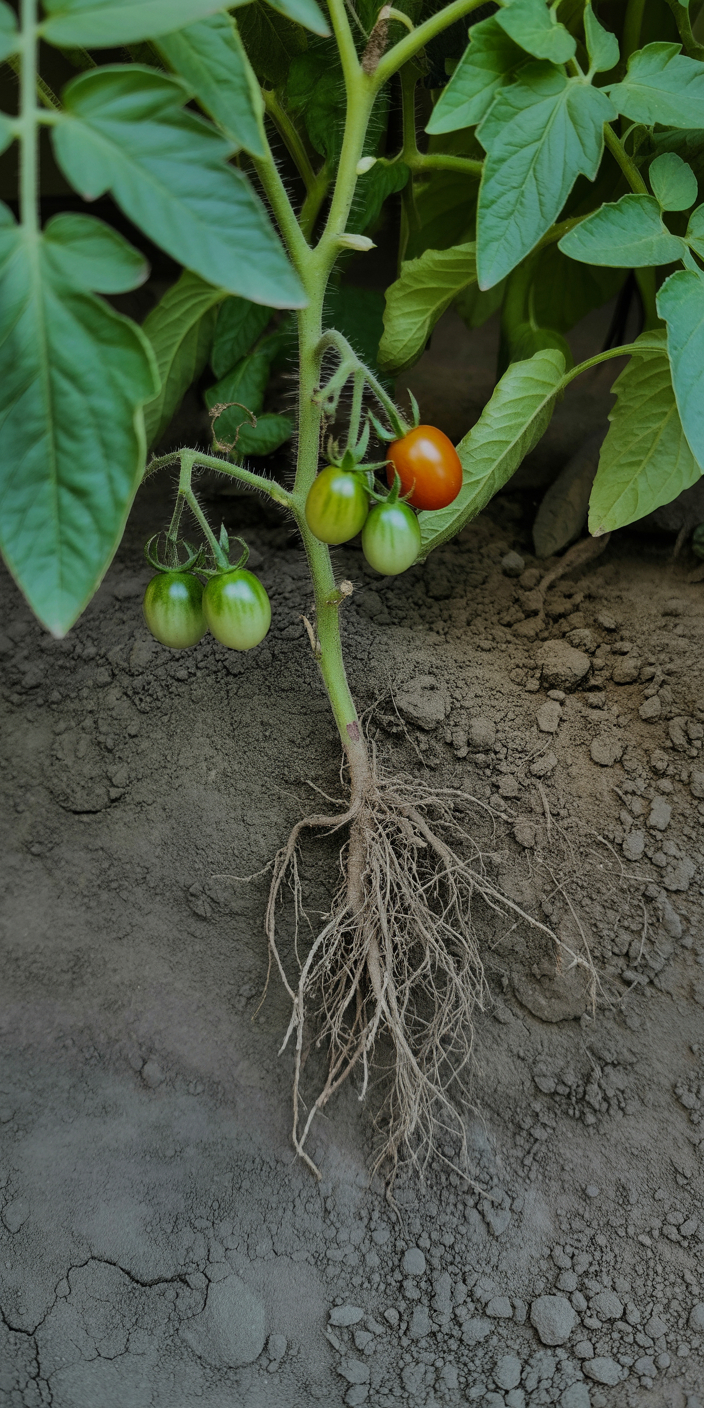
The root of the cherry tomato is a vital part of the plant that plays a crucial role in its growth, health, and fertility. While cherry tomatoes are often grown for their small, sweet fruits and extended harvesting period, it is the strong and well-developed root system that enables the plant to achieve these qualities. The root allows the plant to absorb water and nutrients from the soil, provides stability, helps the plant fight against stress, and directly influences the quality and quantity of the fruits. Without a healthy root, even the most productive variety will not give the expected results.
The root system of the cherry tomato consists of a branched structure, including the primary root, lateral roots, and in some varieties – adventitious roots that can form along the stem when it comes into contact with the soil.
The cherry tomato root system is highly branched and can extend up to one meter deep, depending on soil conditions. In ideal conditions, the plant develops a dense root network that covers and spreads its diameter in the soil, thereby increasing stability and the plant's capacity for nutrient absorption.
The root of the cherry tomato is usually light-colored, ranging from white to light yellow, especially in young plants. As the plant matures, the root may acquire a slightly darker shade. Its texture is smooth yet firm, with noticeable lateral branching.
The length of the root can vary significantly depending on the variety, soil type, and growing conditions. Under optimal conditions, the root can reach a depth of 40 to 60 cm, while lateral roots can spread more than 30 cm in diameter. Interestingly, even though the system is not particularly deep, it is highly efficient, enabling the plant to quickly respond to changes in moisture and nutrition.
Interestingly, cherry tomatoes can form secondary roots along the stem when it is buried in the soil – a technique known as horizontal planting. This ability allows the plant to gain additional stability and more efficient nutrient absorption from the soil. In favorable conditions, adventitious roots offer another advantage – vegetative reproduction. These roots can give rise to new plants, allowing the cherry tomato to spread rapidly and form new plants.
There are several techniques that can be used to strengthen the root system of cherry tomatoes:
The root of the cherry tomato plays a central role in the plant's health and fertility, providing stability, efficient nutrient and water absorption, and resistance to stress. Understanding the structure and needs of the root system, as well as applying appropriate techniques to enhance its development, can significantly contribute to plant health and high yields. Since cherry tomatoes rely on a strong root system for successful growth and fertility, proper care of the soil, watering, fertilization, and the use of mycorrhizal fungi and biostimulants can substantially improve outcomes. With the right care, cherry tomatoes can thrive in optimal conditions and provide high-quality fruits throughout the entire growing season.